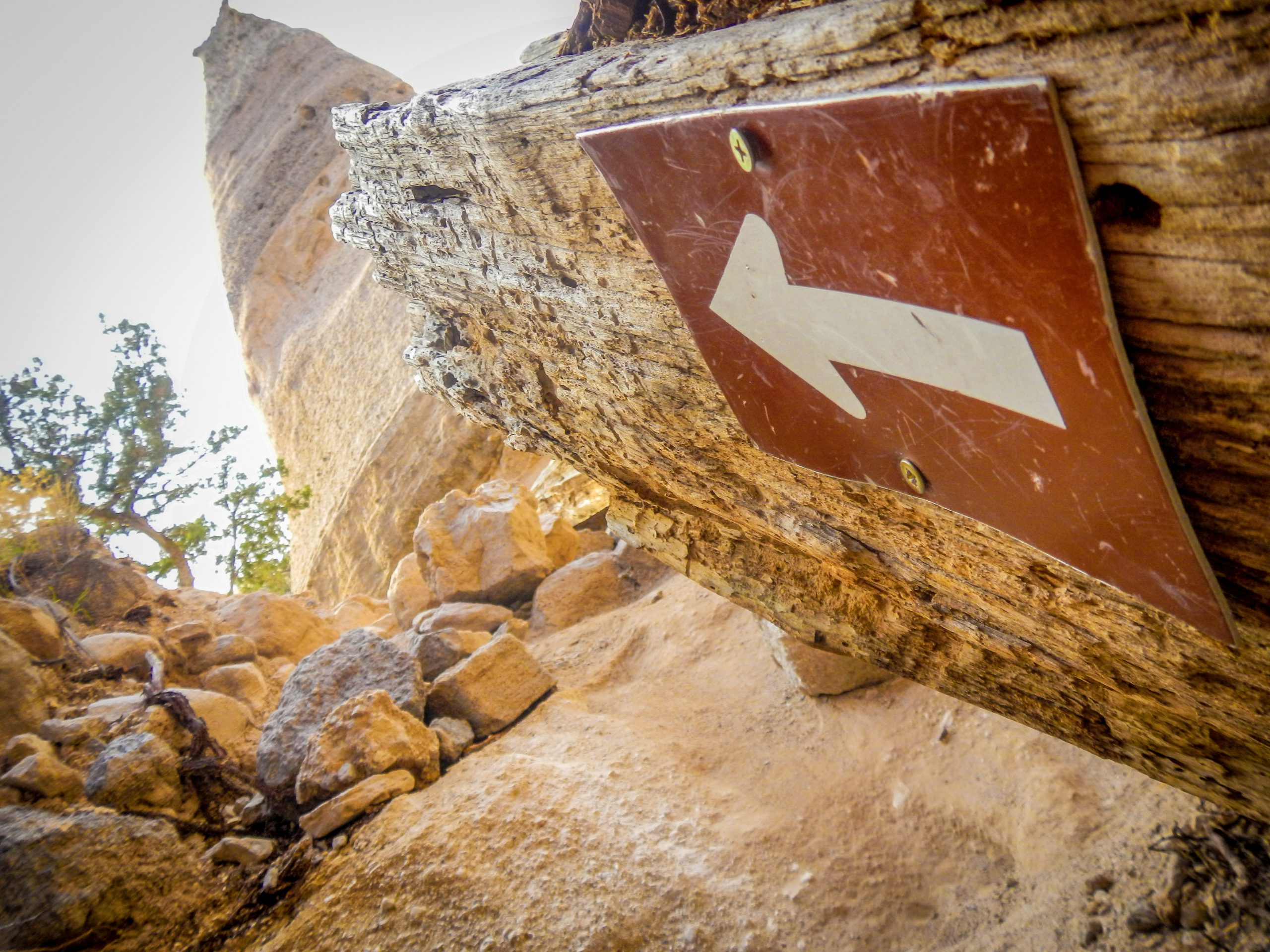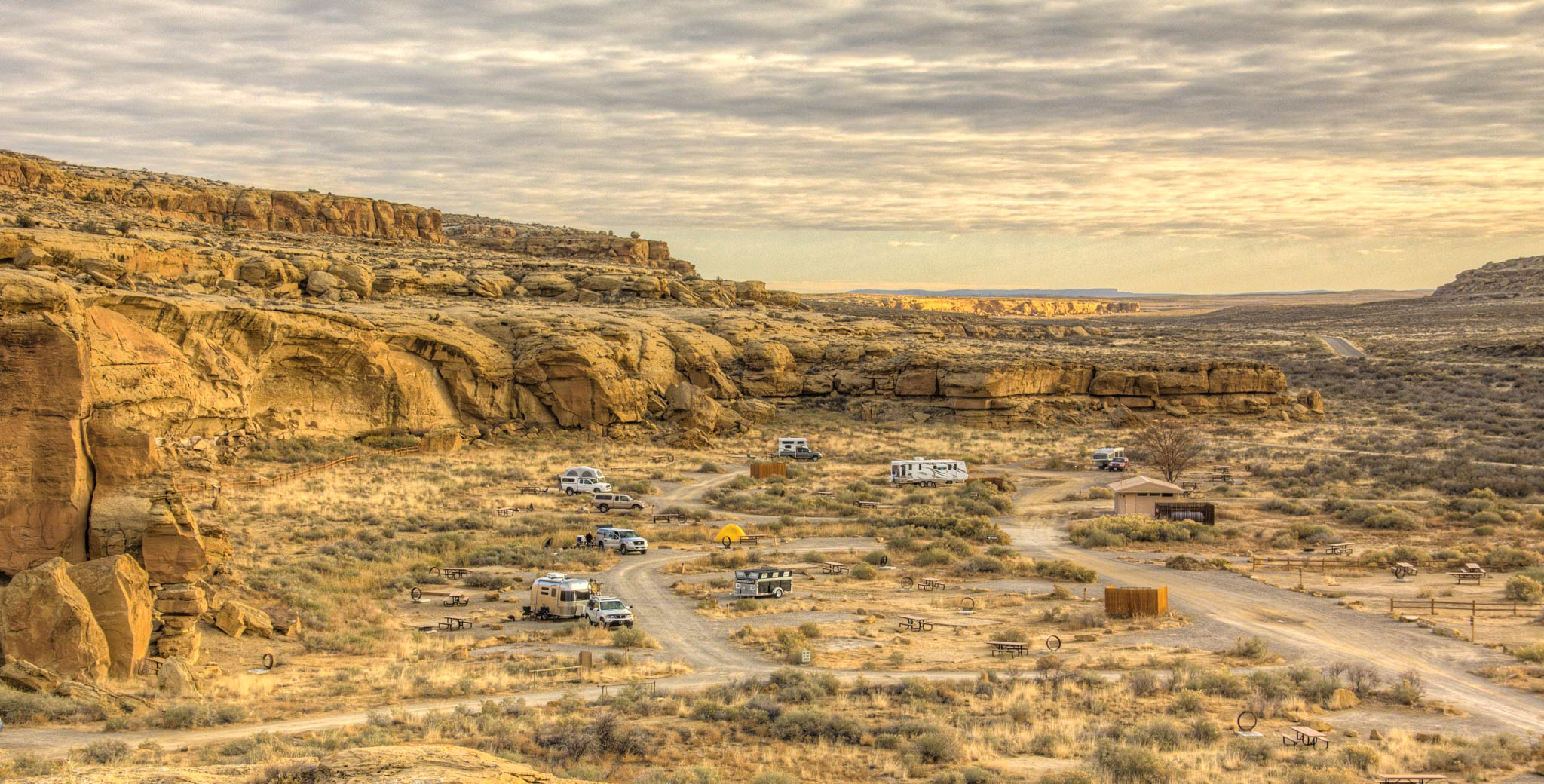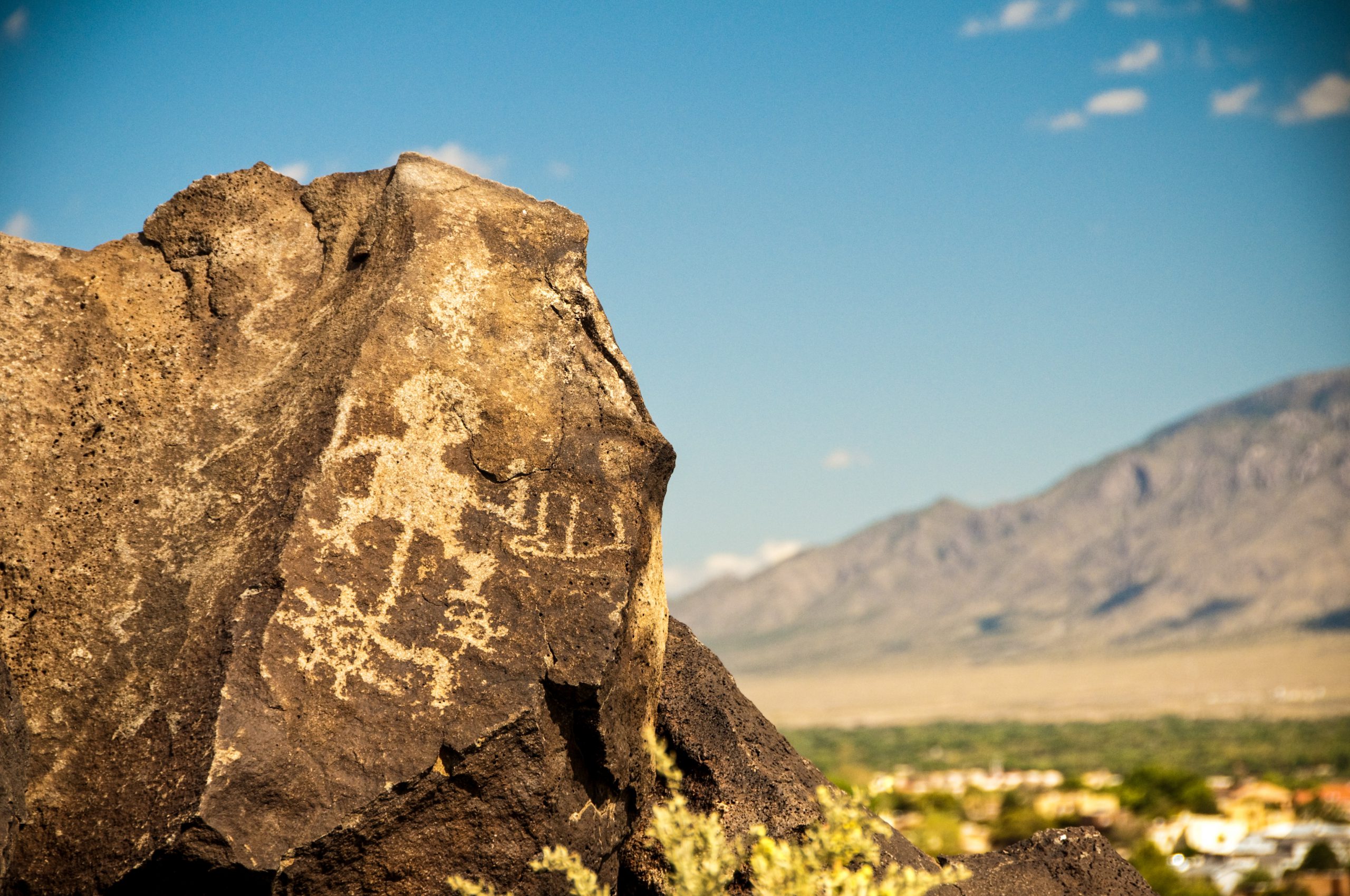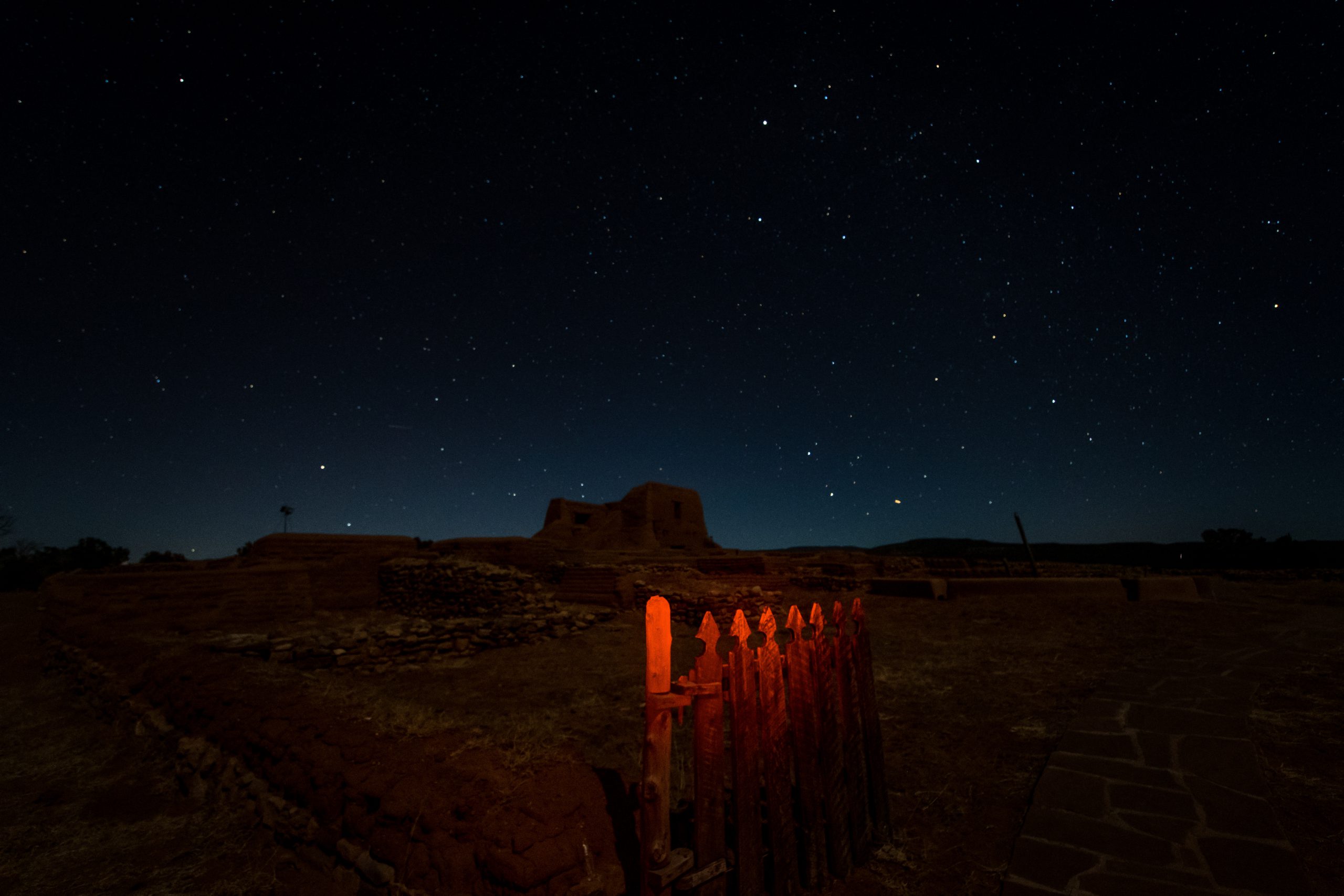Indianz.Com > News > Source New Mexico: Visitors encouraged to respect tribal lands and sacred sites

Popular app AllTrails leads people to sacred sites, some on tribal lands
Rangers push back by launching a campaign to educate respectful outdoor enthusiasts
Monday, September 27, 2021
Leaving the hazy Albuquerque skies, escaping the smoke of distant wildfires covering the Sandia Mountains, you cross west past Nine Mile Hill — maybe make a quick stop to place a wager at the casino — and then drive on until you reach the red rocky mesas. Here, 18-wheelers from the east are the only things that will pull your attention from the impeccable land that is still home to Pueblo citizens. It’s a sight. Users on the crowdsourced hiking app called AllTrails gush about places like this, especially in New Mexico, looking for so-called “hidden gems.” But many of these places are sacred. What’s an inviting landscape to you might actually be tribal land or private property, and you’d be trespassing if you took a road off the highway, jumped down from your car, ignored the signs and went for a hike. Adesbah Foguth has a message for hikers: If you don’t belong, don’t be long. Better yet, don’t come at all. Foguth works outdoors, and still, she needed an outlet. “I was tired of the micro-aggressions I faced every day working so I started to call myself a Power Ranger,” she said. “Then I was like, no, I’m a Native Power Ranger.”

AllTrails is an app that allows users to crowdsource, rate and review hiking or climbing areas. It’s in the editor’s choice category in the Apple app store. AllTrails refused to comment on concerns about posts that are showcasing illegal trails on tribal lands. The company did not answer questions about safeguards within the app that could limit areas people share, such as sacred sites for Indigenous communities. It’s also unclear if AllTrails has any consultation with Native American leaders on how outdoor spaces — many on tribal lands — are presented on the app. “What made me angry was that these places on my own homeland, which are completely off limits to non-Navajo people, were going to be opened up to the public,” said Foguth. “And that was a scary thing.” Foguth said the trails she reported to the app were swiftly removed by the developers. She said one trail was a waterfall location that required people to not only illegally access the Navajo Nation but also trespass on a residential plot of land.“I can’t imagine how that would feel if it was my own home — some strangers, driving through my yard and accessing the trails on my land that I cared about for so many generations, and now it’s just accessed by anybody from off the highway.”Highways that go through the Navajo Nation are open for drivers to pass. Taking outlets, dirt roads,and entering neighborhood roads is trespassing. Getting out of your vehicle and wandering off the highway is not allowed for non-Navajo people.The digital space is creating an entirely new perspective on how people interact with the outdoors. People needing to physically distance or stay away from public indoor spaces during the pandemic energized more individuals to find time in parks of all scales. “The parks were shut down during the pandemic,” Foguth said. “But I did notice overall that there were more people on the public trails on public lands than I’d ever experienced before. So yeah, there definitely was some kind of increase of people going out.” Outdoor recreation is also a major component of the Biden administration’s infrastructure agenda. States like New Mexico are creating outdoor recreation offices within state agencies. Tribal lands can sometimes mix with national or state parks. Foguth said one of the most frequent issues she encounters with visitors to the park where she works is directing them to stay off roads that make travel and access easier but that are closed for visitors who are non-Native.Some tribes do offer outdoor services for non-Indigenous people. For instance, the Navajo Nation Parks and Recreation Department is one of the oldest entities within the Navajo government. It was established in 1957 by the tribal Council and is responsible for more than 25,000 square miles across New Mexico, Colorado and Utah. Pandemic regulations limit permit applications for hunting, camping, hiking and commercial photography. People who aren’t Navajo must have permits to hunt, camp, hike or do commercial photography on Navajo land and must follow pandemic regulations. Some mirror the limitations a person would experience at public open spaces, but some are more restrictive due to sovereign laws that are intended for respecting Diné culture.For instance, “Cremation, littering, rock climbing, and drones are strictly prohibited inside Navajo Tribal Parks lands,” according to the department. “Dune buggies, Jeeps, 4-wheel drive vehicles and modified motorcycles are strictly prohibited. Unnecessary trails or roads result in erosion to the fragile environment. All disturbance will be fined to the utmost extent.” That’s per Navajo Nation law.

TIPS FOR HIKERS
- Check in advance to see if the trail you want to visit crosses onto tribal lands.
- Watch for trespassing signs — and obey them.
- Be aware of and abide by the laws and rules if you’re visiting a sovereign nation with permission or an invitation. Each tribal nation is different, with their own laws.
- Reach out in advance for permission to hike a path.
- Plan on a tour with a sanctioned guide.
- Stay off private property, even if it looks like a shortcut.
- Be considerate about COVID safety concerns and regulations in the place you’re visiting.
- Wear a mask.
- Don’t ever leave trash.
- Don’t erode the landscape and keep to a designated legal path.
- Check out the Native Power Rangers Instagram page for more tips.
Interactions on her page include positive reactions. “Thank you. I know I’ve been guilty of making insensitive commentary around places I didn’t fully understand the sacred history of,” user alexanderthek8 writes. “But I don’t need nor am I entitled to sacred knowledge in order to do better — to tread lightly and speak quietly and respectfully of your lands. I do my best to spread this teaching to all my fellow well-intending outdoor family.”Foguth posted about the New Mexico True campaign encouraging outdoor recreation and drew another complex response. “There is currently a push for more Black people to visit national parks. And as a Black woman who enjoys the occasional national park, I feel I’m in a weird place regarding topics like these,” user mind_dee_gap writes. “Still, my concern is that people of color will buy into this white colonial narrative being pushed when it comes to sacred sites located in national parks. As someone who follows multiple social media accounts that encourage people of color, mainly Black people, to travel more both internationally and nationally, how can those of us who enjoy national parks counteract the harmful way mainstream society is promoting these places?”

Shaun Griswold is a journalist in Albuquerque. He is a citizen of the Pueblo of Laguna, and grew up in Albuquerque and Gallup. He brings a decade of print and broadcast news experience. Most recently he covered Indigenous affairs with New Mexico In Depth. Shaun reports on issues important to Native Americans in urban and tribal communities throughout the state, including education and child welfare.
Source New Mexico is part of States Newsroom, a network of news bureaus supported by grants and a coalition of donors as a 501c(3) public charity. Source New Mexico maintains editorial independence. Contact Editor Marisa Demarco for questions: info@sourcenm.com. Follow Source New Mexico on Facebook and Twitter. This story is published under a Creative Commons license.
Search
Filed Under
Tags
More Headlines
Native America Calling: How Native literature is changing the mainstream narrative
Native America Calling: No ordinary animal
Native America Calling: Safeguards on Artificial Intelligence
NAFOA: 5 Things You Need to Know this Week
Chuck Hoskin: Cherokee Nation takes the lead for our environment
Native America Calling: Earth Day assessment for Native peoples
Cronkite News: Gathering addresses ‘epidemic’ among Native people
VIDEO: Cody Desautel on tribes and federal forest management
AUDIO: Legislative Hearing on Discussion Draft of Forest Management Bill
Native America Calling: Remembering the 1974 Navajo border town murders
Native America Calling: Can the right approach close the Native immunization gap?
Cronkite News: Long COVID cases remain high in Arizona
Native America Calling: Eyes in the sky for development, public safety, and recreation
Native America Calling: Three new films offer diverse views of Native life
NAFOA: 5 Things You Need to Know this Week
More Headlines
Native America Calling: No ordinary animal
Native America Calling: Safeguards on Artificial Intelligence
NAFOA: 5 Things You Need to Know this Week
Chuck Hoskin: Cherokee Nation takes the lead for our environment
Native America Calling: Earth Day assessment for Native peoples
Cronkite News: Gathering addresses ‘epidemic’ among Native people
VIDEO: Cody Desautel on tribes and federal forest management
AUDIO: Legislative Hearing on Discussion Draft of Forest Management Bill
Native America Calling: Remembering the 1974 Navajo border town murders
Native America Calling: Can the right approach close the Native immunization gap?
Cronkite News: Long COVID cases remain high in Arizona
Native America Calling: Eyes in the sky for development, public safety, and recreation
Native America Calling: Three new films offer diverse views of Native life
NAFOA: 5 Things You Need to Know this Week
More Headlines